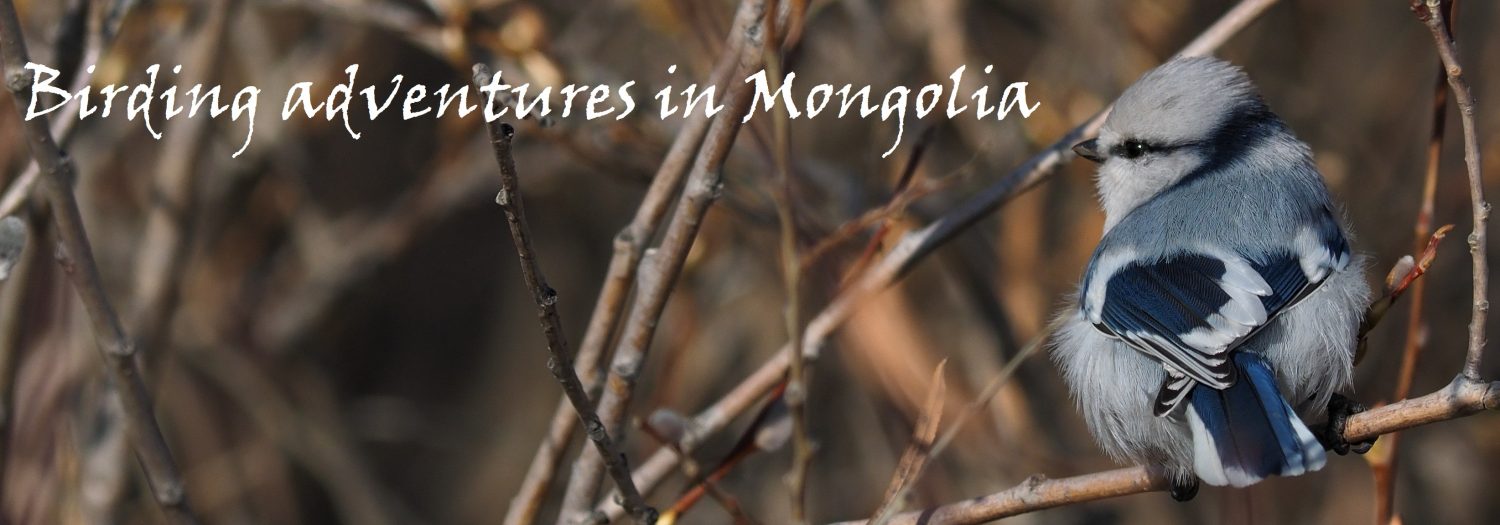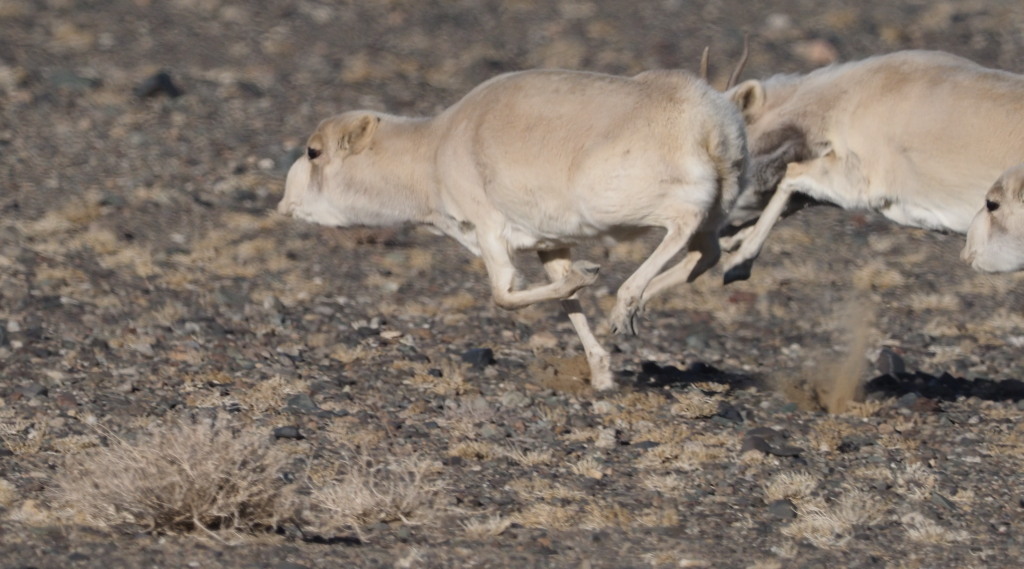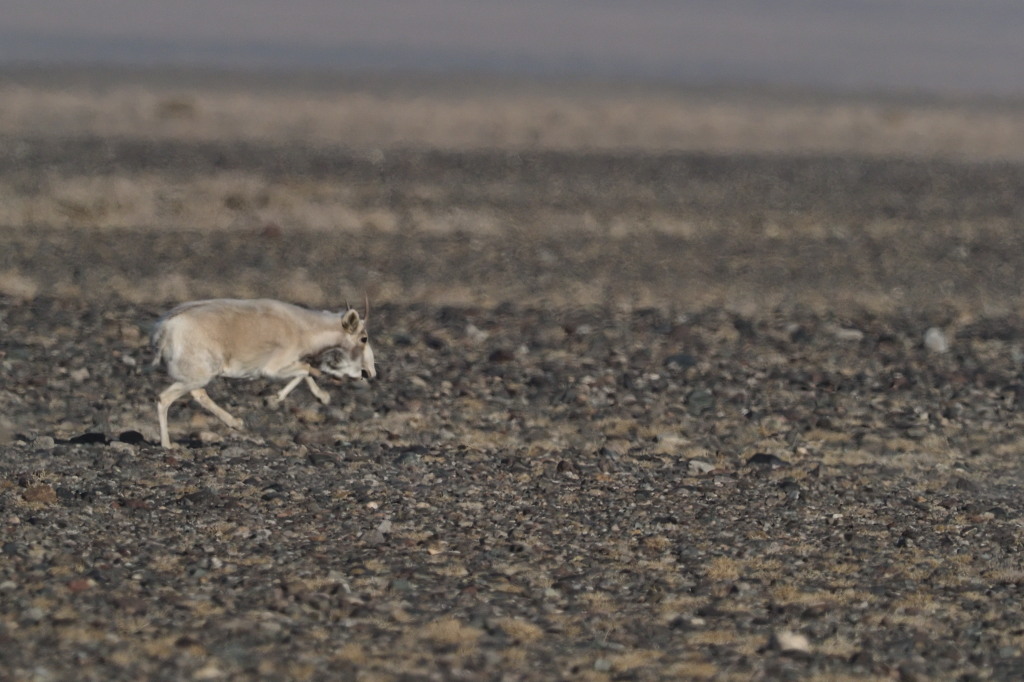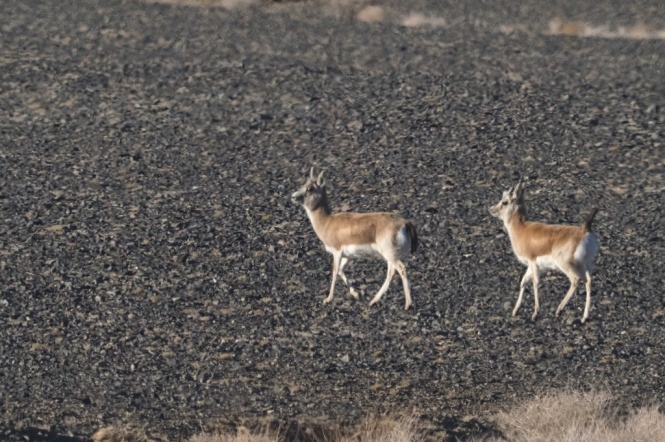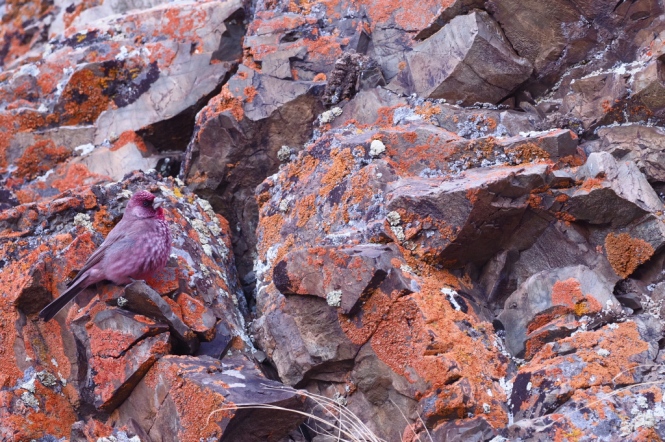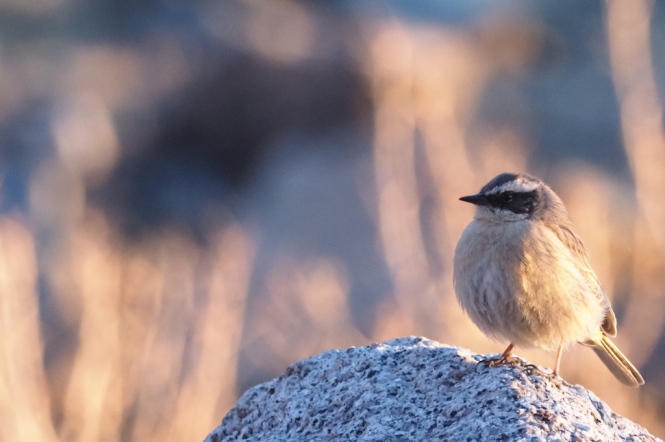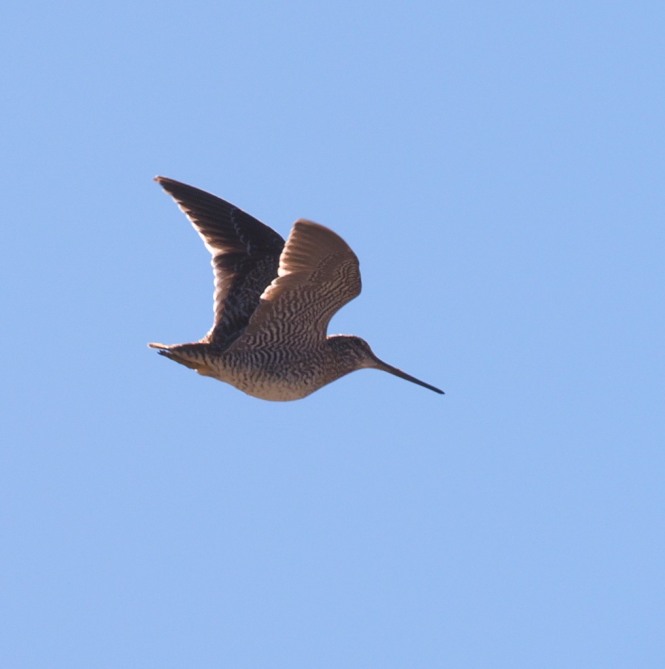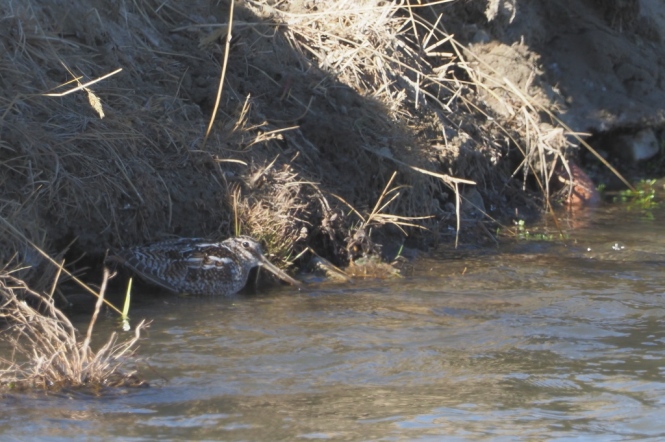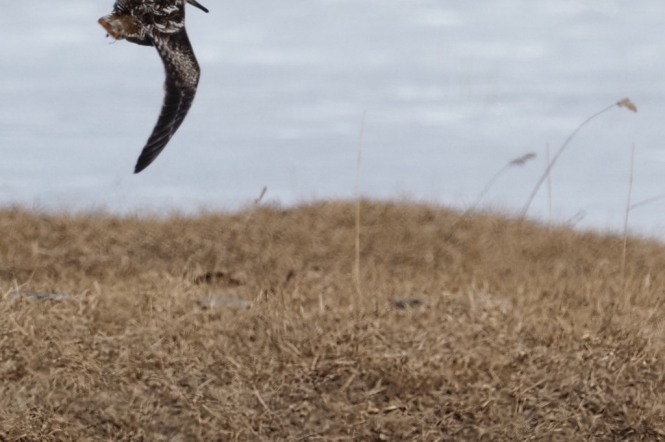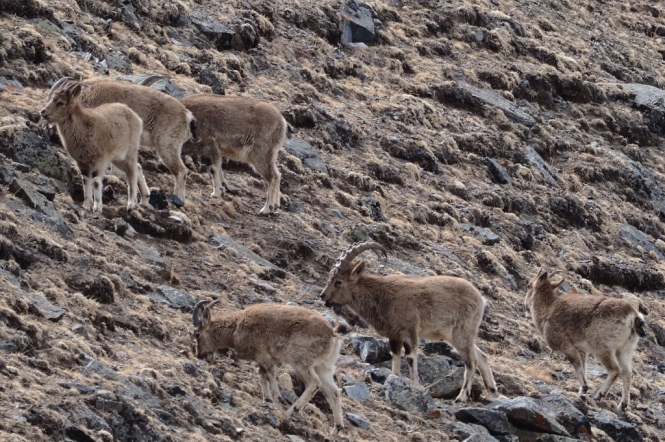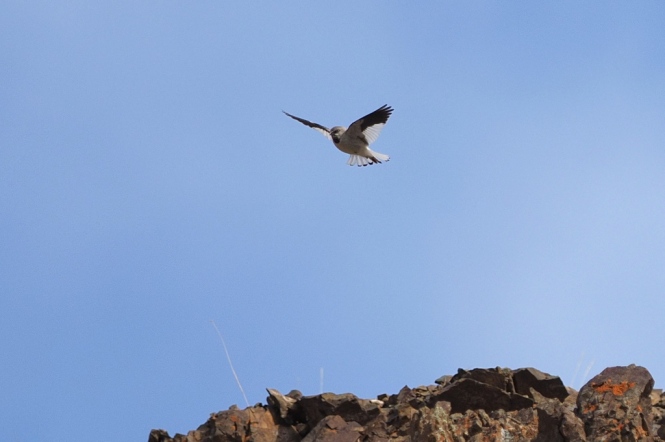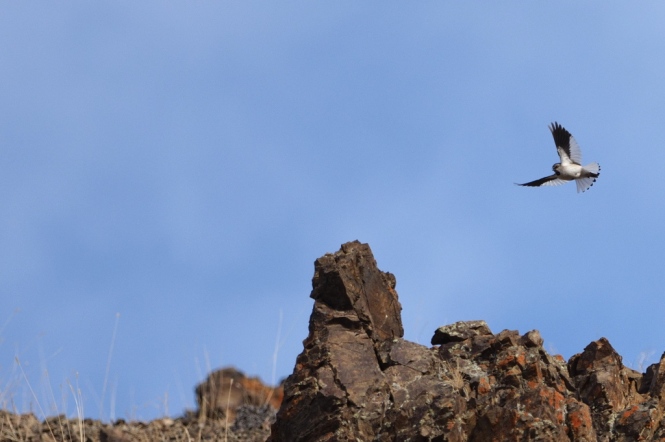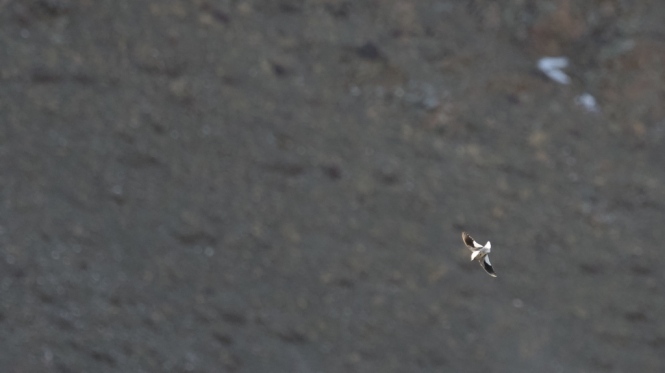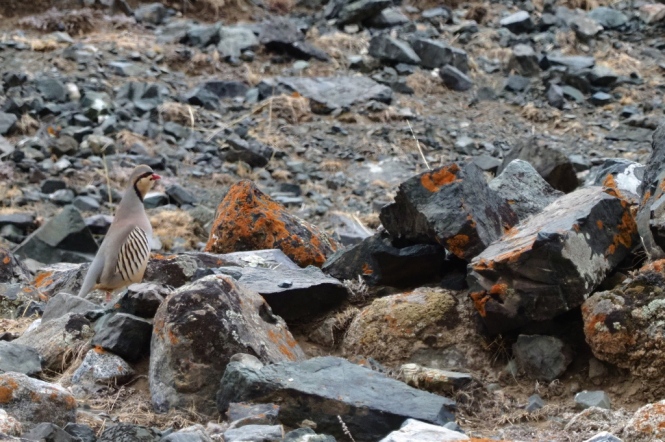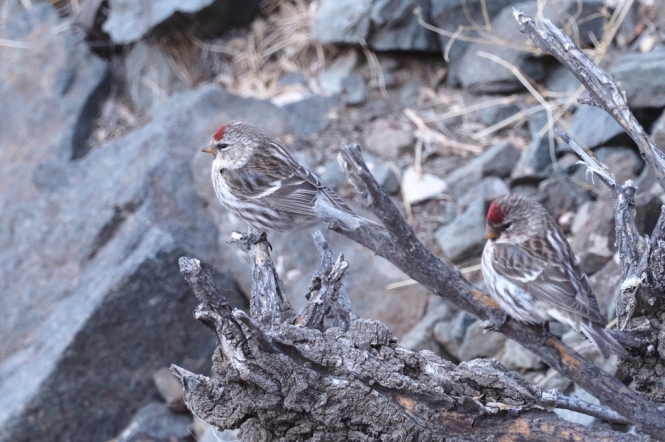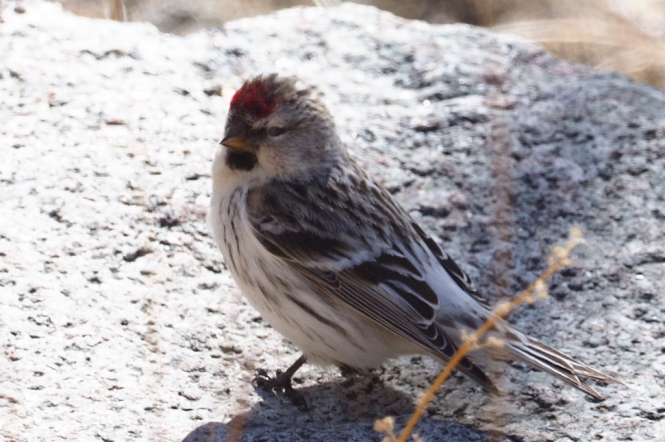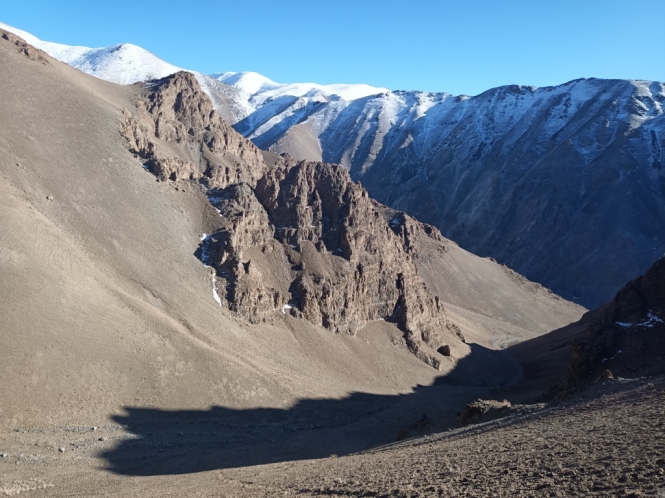
Two weeks ago my wife and I went camping for a single night in Khar Chuluut in the Jargalant Mountains. Our kids were all having a sleep-over, so we were free to go on a short trip. The drive to Khar Chuluut takes about 3 hours from Khovd. As we reached the plains south of Khar Us Nuur we had several flocks of both Mongolian Saigas passing the road.
We also got lucky as a few Goitered Gazelles crossed the track.
We arrived as the sun set, pitched our tent and made a nice camp fire and then went to sleep. We woke up at sunrise, where we had time to hike for about two hours. Just 400 meters from our tent we found Snow Leopard footprints and dung. Not totally fresh though.
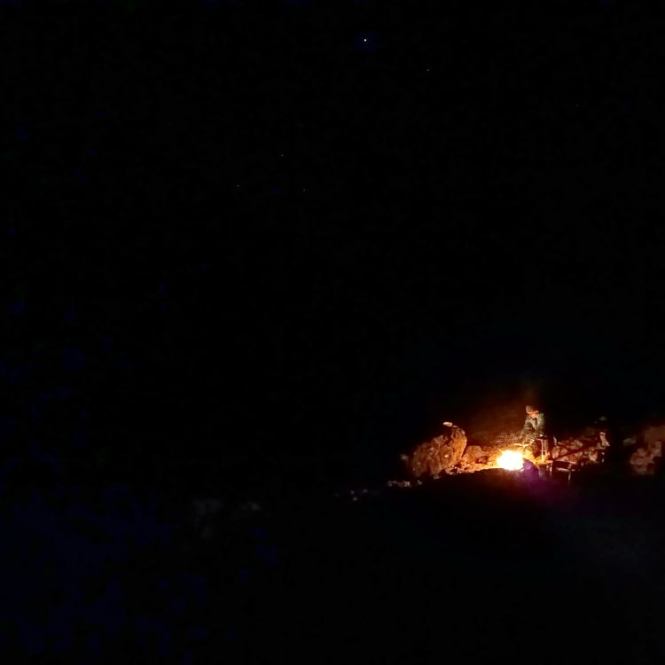
A little deeper into the valley a single Altai Snowcock was calling from the hights, but too far for photos. As we hiked further up a pair of Great Rosefinches showed well and provided at true sense of being in the mountains.
Other birds around included the “pale mountain” Twites, Brown Accentors and Lammergeier.
Sadly we only had two hours before we had to drive back home. But as we passed through Mankhan I made a brief stop to look for the Solitary Snipes – and without much effort a single bird was seen along a stream.

I really enjoyed the time in the mountains – so much so that I asked my wife if I could go back alone during the weekend. Permission was granted and I got to spend two and a half days in the mountains.
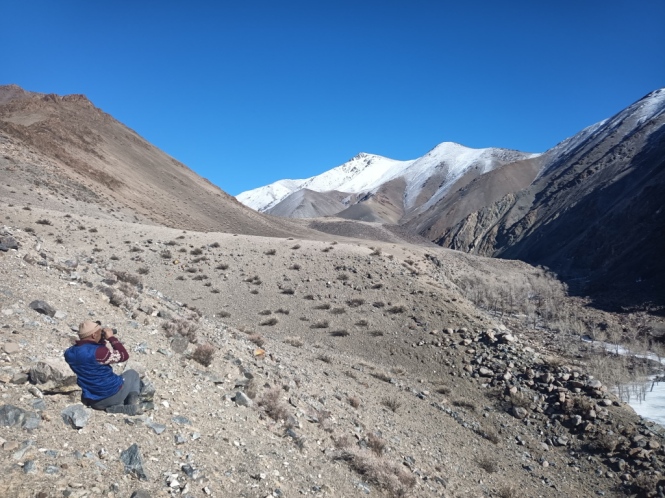
I had made arrangements with a local herder, Baavaashar, who was guiding me for two full days in the mountains. His family has lived in the mountains for generations and he knows the animals and the mountain as well as anyone.
The mountains are primarily used for grazing during winter and in March all the livestock is down on the plains. This means that the Snow Leopards are hungry and come down to lower altitudes according to Baavaashar. When he lives in the mountains he sees the Snow Leopards about three times each month while herding his flocks. That is well to mention without bins and without looking specifically for them.
There are basically two ways of finding the Leopards. Several groups have had great succes in sidding down and just scanning the mountain slopes for hours and hours with telescopes until a Leopard is spotted.
Baavaashars approach was more of a herders approach. Walking and walking and scanning with bins. This means that a distant or partly obscured animal with pass by unnoticed, but a moving animal at closer distance will be detected.

We got up each morning at 5 AM and hiked more than 10 kilometers in the mountains each day. On the first day we climbed to more than 3000 meters altitude. I used my scope and Baavaashar borrowed my bins.
During the day we saw about 50 Siberian Ibex, some a quite close range. An impressive animal – and one of the Snow Leopards main preys.
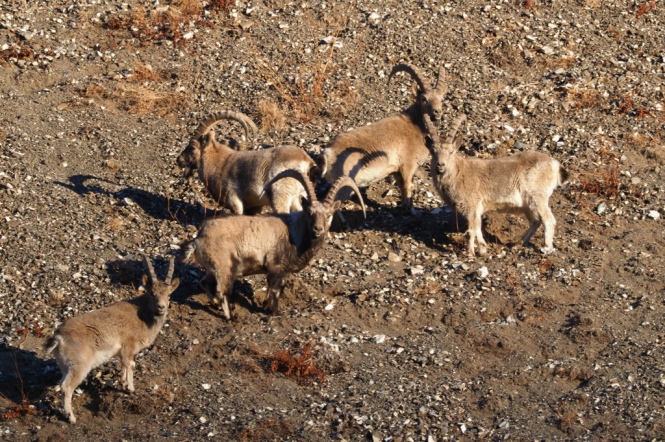
There were also plenty of birds including nine sightings of Lammergeier including three birds together and one passing right over our heads.
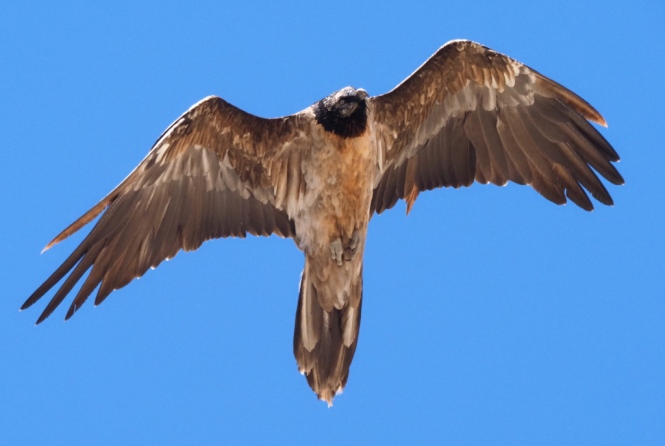
Lammergeier 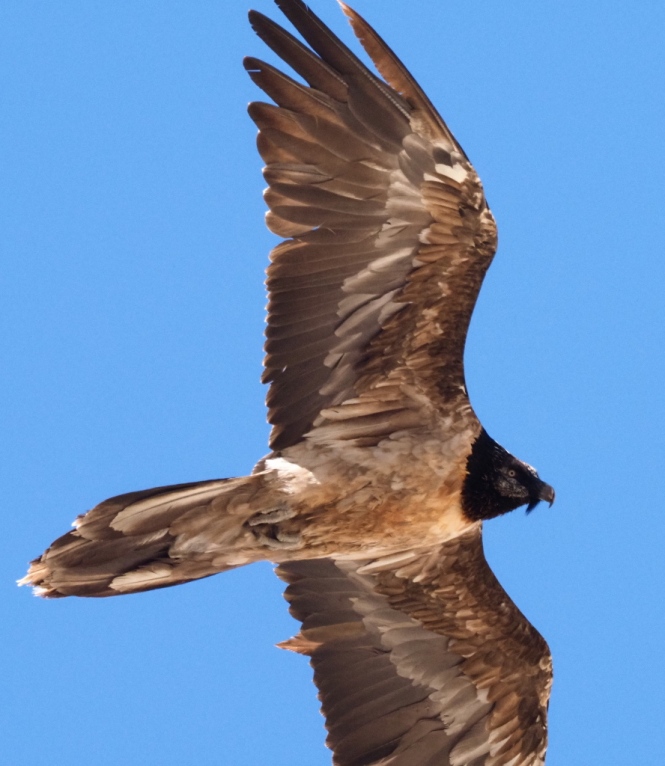
Lammergeier
White-winged Snowfinches were common and higher altitudes. They were singing and calling – and mostly seen in pairs. Always a nice bird to encounter.
Baavaashar found some fresh tracks of a Snow Leopard, and we followed it for several kilometers all the way to a mountain ridge. Sadly it seemed that it had walked down in a valley to the south, which we didn’t have time to check.
The second day we hiked deep into the mountains. It turned out to be the day of the Altai Snowcocks with 16 birds seen at 11 different places. They were always rather distant, but showed very well in the scope. We even had a few birds flying over our heads. They are rather shy – maybe due to hunting. Mongolians believe the eating Altai Snowcocks brings good health and I’ve heard that a single bird can be sold for more than one weeks wages on the market.

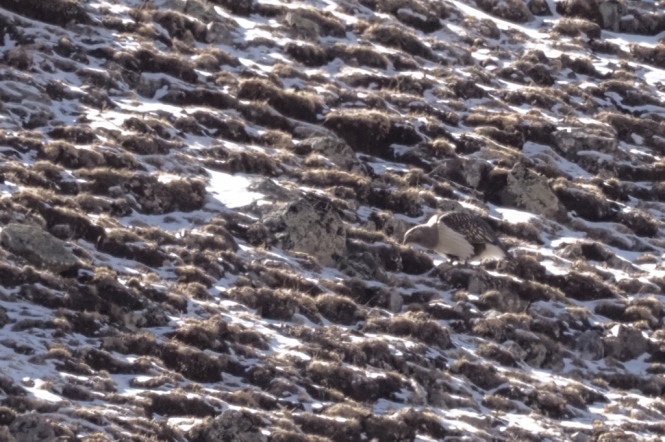
In the afternoon we were scanning the slopes when Baavaashar suddenly spotted a Snow Leopard with the binoculars. He was only four meters away from me when he spotted it. He hurried towards me and tried to find the animal in the scope. I was calm as I though he had found a sleeping animal, but it turned out that it was running up a slope. So when he finally located it in the scope it was just passing a ridge never to be seen again. If I had had my bins I’ve probably seen it before it was gone… I guess you don’t get any closer to seeing a Snow Leopard than this – without seeing it.
Other birds of the day included plenty of Chukars, Lammergeiers, Twites, Common Redpolls and a single Arctic Redpoll.
On the last day we again went out a 5 AM. This time we did some serious climbing in the north. The scenery was amazing, but I was getting a bit tired after all the hiking with both scope and camera. Baavaashar to the contrary had wings. He walked the mountains like and Ibex. And one point he scared off a large Wolf which ran off never to be seen again. And the Snow Leopard didn’t show either.
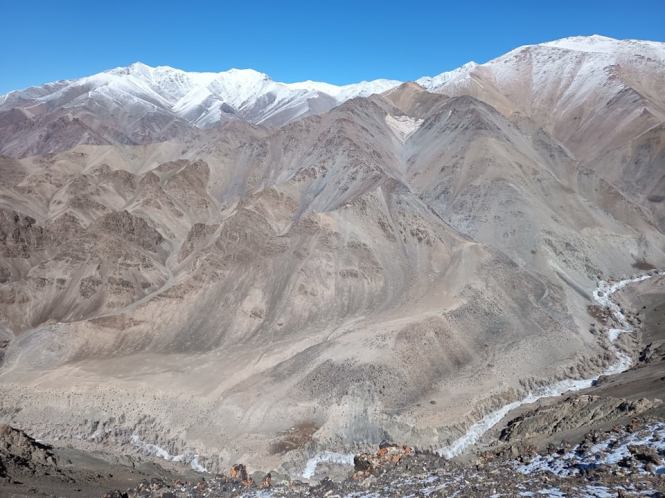
Some good birds included more Altai Snowcocks, White-winged Snowfinches, Evermann’s and Guldenstadt’s Redstarts, Northern Goshawk, Lammergeier, Cinerous Vultures, Twites, Red-billed Choughs and on the way back home I found two White Wagtails ssp. personata.

All in all I had a very good time with Baavaashar in the mountains. Amazing scenery, plenty of Siberian Ibex, good alpine birds – and I got to practice my Mongolian quite a lot since Baavaashar doesn’t speak English.
Hopefully I’ll have plenty of opportunities to try for the Grey Ghost in the coming months and years. And two and a half day really isn’t that long, when it comes to finding a Snow Leopard. Baavaashar also told me, that you need at least four full days to have a fair chance of seeing a Snow Leopard.
The hiking approach of finding the Leopards has the benefit that you might seen the animals a close range, but I think the chance of finding a Snow Leopard is much higher by methodically scanning the mountains – and the more scopes the better the chance of finding one.
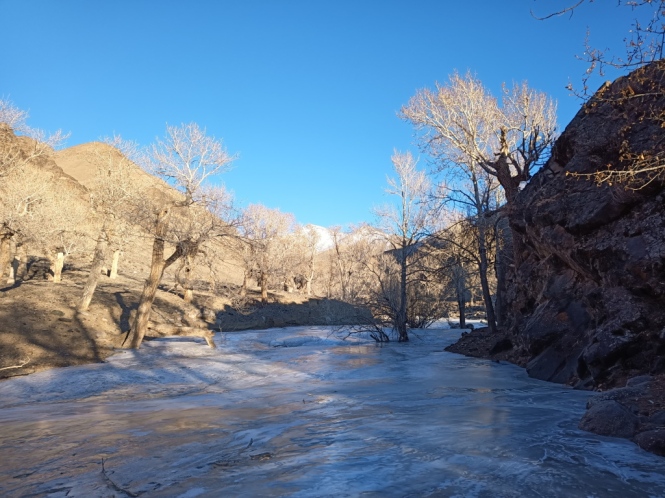
Silas
